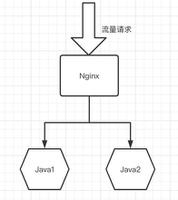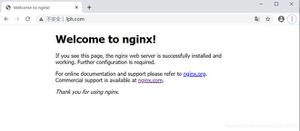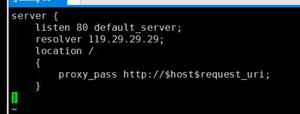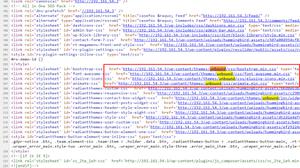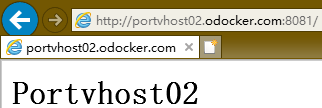Ansible免密登录与主机清单Inventory

Ansible的指定用户与密码登录、免密登录、指定ssh端口以及主机清单Inventory配置
在实际使用中并不需要对ansible配置进行修改,或者说只有需要的时候才修改ansible配置。
添加用户账号
说明:
1、 运维人员使用的登录账号;
2、 所有的业务都放在 /app/ 下「yun用户的家目录」,避免业务数据乱放;
3、 该用户也被 ansible 使用,因为几乎所有的生产环境都是禁止 root 远程登录的(因此该 yun 用户也进行了 sudo 提权)。
1# 使用一个专门的用户,避免直接使用root用户2# 添加用户、指定家目录并指定用户密码3# sudo提权4# 让其它普通用户可以进入该目录查看信息5 useradd -u 1050 -d /app yun && echo"123456" | /usr/bin/passwd --stdin yun6echo"yun ALL=(ALL) NOPASSWD: ALL" >> /etc/sudoers7chmod755 /app/
基于密码连接「了解」
在实际生产环境中,建议使用基于秘钥连接而不是密码连接。
原因如下:
1、将密码直接写入文件中,有安全隐患;
2、生产环境的密码可能会定期更换,如果基于密码连接,那么我们也会频繁的维护,造成维护成本高;
3、基于秘钥连接,我们只需要做一次秘钥分发,后期连接无需任何修改。
清单配置
1 [yun@ansi-manager ansible_info]$ pwd2 /app/ansible_info
3 [yun@ansi-manager ansible_info]$ cat hosts_pwd
4# 未分组机器,放在所有组前面
5# 默认端口22,可省略
6 # 方式1:主机 + 端口 + 密码
7172.16.1.180 ansible_ssh_port=22 ansible_ssh_user=yun ansible_ssh_pass="123456"
8
9 # 方式2:主机 + 端口 + 密码
10[proxyservers]
11172.16.1.18[1:2] ansible_ssh_port=22 ansible_ssh_user=yun ansible_ssh_pass="123456"
12
13 # 方式3:主机 + 端口 + 密码
14[webservers]
15172.16.1.18[3:5] ansible_ssh_port=22 ansible_ssh_user=yun
16[webservers:vars]
17 ansible_ssh_pass="123456"
测验连接
1 [yun@ansi-manager ansible_info]$ ansible 172.16.1.180 -m ping -i ./hosts_pwd # 普通用户执行2172.16.1.180 | FAILED! => {3"msg": "Using a SSH password instead of a key is not possible because Host Key checking is enabled and sshpass does not support this. Please add this host"s fingerprint to your known_hosts file to manage this host."4}
5 [yun@ansi-manager ansible_info]$ sudo ansible 172.16.1.180 -m ping -i ./hosts_pwd # 提权使用 root 用户执行
6172.16.1.180 | FAILED! => {
7"msg": "Using a SSH password instead of a key is not possible because Host Key checking is enabled and sshpass does not support this. Please add this host"s fingerprint to your known_hosts file to manage this host."
8 }
大概提示信息:因为启用了主机密钥检查,而 sshpass 不支持这一点。请将此主机「172.16.1.180」的指纹添加到你本机的known_hosts文件中以管理此主机。
跳过主机密钥检查,有两种方式:
方式1:修改 Linux 系统配置
1 [root@ansi-manager ssh]# vim /etc/ssh/ssh_config 2# AddressFamily any3 # ConnectTimeout 04# StrictHostKeyChecking ask # 将该配置的注释打开,并改为 StrictHostKeyChecking no 这样针对所有用户都不会在进行 「主机密钥检查」了
5 # IdentityFile ~/.ssh/identity
但是这个是 Linux 自带的配置,我们不能随意去更改。因此不建议如此操作。
方式2:修改 ansible 配置
1 [root@ansi-manager ansible]# pwd2 /etc/ansible
3 [root@ansi-manager ansible]# vim ansible.cfg
4# uncomment this to disable SSH key host checking
5 host_key_checking = False # 将该配置的注释去掉
改配置仅对 root 用户生效,其他普通用户是不生效的。这里使用该方法。
再次连接测试
1 [yun@ansi-manager ansible_info]$ ansible 172.16.1.180 -m ping -i ./hosts_pwd # 普通用户还是不行 2172.16.1.180 | FAILED! => { 3"msg": "Using a SSH password instead of a key is not possible because Host Key checking is enabled and sshpass does not support this. Please add this host"s fingerprint to your known_hosts file to manage this host."4}
5 [yun@ansi-manager ansible_info]$ sudo ansible 172.16.1.180 -m ping -i ./hosts_pwd # 提权使用 root 用户执行
6172.16.1.180 | SUCCESS => {
7"ansible_facts": {
8"discovered_interpreter_python": "/usr/bin/python"
9 },
10"changed": false,
11"ping": "pong"
12}
13 [yun@ansi-manager ansible_info]$ sudo ansible proxyservers -m ping -i ./hosts_pwd # 正常
14 [yun@ansi-manager ansible_info]$ sudo ansible webservers -m ping -i ./hosts_pwd # 正常
基于秘钥连接「推荐」
在实际生产环境中,建议使用基于秘钥连接而不是密码连接。
原因如下:
1、将密码直接写入文件中,有安全隐患;
2、生产环境的密码可能会定期更换,如果基于密码连接,那么我们也会频繁的维护,造成维护成本高;
3、基于秘钥连接,我们只需要做一次秘钥分发,后期连接无需任何修改。
实现yun用户免秘钥登录
要求:根据规划实现 172.16.1.180 到 172.16.1.180、172.16.1.181、172.16.1.182、172.16.1.183、172.16.1.184、172.16.1.185 免秘钥登录
因此需要在 172.16.1.180 机器创建秘钥,然后分发到受控机器。
创建秘钥
1 [yun@ansi-manager ~]$ ssh-keygen -t rsa # 一路回车即可 注意使用的是 yun 用户2 # 生成之后会在用户的根目录生成一个 “.ssh”的文件夹3 [yun@ansi-manager ~]$ ll -d .ssh/4 drwx------ 2 yun yun 38 Jul 2510:51 .ssh/
5 [yun@ansi-manager ~]$ ll .ssh/
6 total 8
7 -rw------- 1 yun yun 1675 Jul 2510:51 id_rsa
8 -rw-r--r-- 1 yun yun 398 Jul 2510:51 id_rsa.pub
分发密钥
1 [yun@ansi-manager ~]$ ssh-copy-id -i ~/.ssh/id_rsa.pub 172.16.1.1802 [yun@ansi-manager ~]$ ssh-copy-id -i ~/.ssh/id_rsa.pub 172.16.1.181
3 [yun@ansi-manager ~]$ ssh-copy-id -i ~/.ssh/id_rsa.pub 172.16.1.182
4 [yun@ansi-manager ~]$ ssh-copy-id -i ~/.ssh/id_rsa.pub 172.16.1.183
5 [yun@ansi-manager ~]$ ssh-copy-id -i ~/.ssh/id_rsa.pub 172.16.1.184
6 [yun@ansi-manager ~]$ ssh-copy-id -i ~/.ssh/id_rsa.pub 172.16.1.185
测验免密登录是否成功
1 [yun@ansi-manager ~]$ ssh172.16.1.180 # 等价于 ssh yun@172.16.1.1802 [yun@ansi-manager ~]$ ssh172.16.1.181
3 [yun@ansi-manager ~]$ ssh172.16.1.182
4 [yun@ansi-manager ~]$ ssh172.16.1.183
5 [yun@ansi-manager ~]$ ssh172.16.1.184
6 [yun@ansi-manager ~]$ ssh172.16.1.185
注意:必须保证每台机器都免密登录成功,因此需要每台机器都验证。
.ssh目录中的文件说明
1 [yun@ansi-manager .ssh]$ pwd2 /app/.ssh
3 [yun@ansi-manager .ssh]$ ll
4 total 16
5 -rw------- 1 yun yun 398 Jul 2511:01 authorized_keys
6 -rw------- 1 yun yun 1675 Jul 2510:51 id_rsa
7 -rw-r--r-- 1 yun yun 398 Jul 2510:51 id_rsa.pub
8 -rw-r--r-- 1 yun yun 1120 Jul 2511:04 known_hosts
9########################################################################################
10authorized_keys :存放要远程免密登录机器的公钥,主要通过这个文件记录多台要远程登录机器的公钥
11id_rsa : 生成的私钥文件
12id_rsa.pub :生成的公钥文件
13 know_hosts : 已知的主机公钥清单
清单配置
1 [yun@ansi-manager ansible_info]$ pwd2 /app/ansible_info
3 [yun@ansi-manager ansible_info]$ cat hosts_key
4# 未分组机器,放在所有组前面
5# 默认端口22,可省略
6 # 方式1、主机 + 端口 + 密钥
7172.16.1.180:22
8
9 # 方式2:主机 + 端口 + 密钥
10[proxyservers]
11172.16.1.18[1:2]:22
12
13 # 方式3:别名 + 主机 + 端口 + 密码
14[webservers]
15 web01 ansible_ssh_host=172.16.1.183 ansible_ssh_port=22
16 web02 ansible_ssh_host=172.16.1.184 ansible_ssh_port=22
17 web03 ansible_ssh_host=172.16.1.185 ansible_ssh_port=22
测验连接
测验一
1 [yun@ansi-manager ansible_info]$ ansible 172.16.1.180 -m ping -i ./hosts_key 2172.16.1.180 | SUCCESS => {3"ansible_facts": {4"discovered_interpreter_python": "/usr/bin/python"5 },
6"changed": false,
7"ping": "pong"
8 }
测验二
1 [yun@ansi-manager ansible_info]$ ansible proxyservers -m ping -i ./hosts_key 2172.16.1.181 | SUCCESS => { 3"ansible_facts": { 4"discovered_interpreter_python": "/usr/bin/python"5 },
6"changed": false,
7"ping": "pong"
8}
9172.16.1.182 | SUCCESS => {
10"ansible_facts": {
11"discovered_interpreter_python": "/usr/bin/python"
12 },
13"changed": false,
14"ping": "pong"
15 }
测验三
1 [yun@ansi-manager ansible_info]$ ansible webservers -m ping -i ./hosts_key 2 web03 | SUCCESS => { 3"ansible_facts": { 4"discovered_interpreter_python": "/usr/bin/python"5 },
6"changed": false,
7"ping": "pong"
8}
9 web01 | SUCCESS => {
10"ansible_facts": {
11"discovered_interpreter_python": "/usr/bin/python"
12 },
13"changed": false,
14"ping": "pong"
15}
16 web02 | SUCCESS => {
17"ansible_facts": {
18"discovered_interpreter_python": "/usr/bin/python"
19 },
20"changed": false,
21"ping": "pong"
22 }
混合方式和主机组方式
清单配置
1 [yun@ansi-manager ansible_info]$ pwd2 /app/ansible_info
3 [yun@ansi-manager ansible_info]$ cat hosts_group
4# 未分组机器,放在所有组前面
5# 默认端口22,可省略
6 # 方式1、主机 + 端口 + 密钥
7172.16.1.180
8
9 # 方式一、主机组变量 + 主机 + 密码
10[proxyservers]
11172.16.1.18[1:2] ansible_ssh_port=22 ansible_ssh_user=yun ansible_ssh_pass="123456"
12
13 # 方式二、主机组变量 + 主机 + 密钥
14[webservers]
15172.16.1.18[3:5]:22
16
17# 定义多组,多组汇总整合
18# website 组包括两个子组[proxyservers, webservers]
19[website:children]
20proxyservers
21 webservers
说明:定义多组使用没有问题。但是不能像上面一样既有密码配置,又有秘钥配置,这样会增加维护成本。这里为了演示因此用了密码和秘钥配置。
测验连接
测验一
1 # 如果 ~/.ssh/known_hosts 文件中没有添加受控机指纹,那么必须提权操作 2 [yun@ansi-manager ansible_info]$ sudo ansible proxyservers -m ping -i ./hosts_group --list-hosts 3 hosts (2): 4172.16.1.1815172.16.1.182
6 [yun@ansi-manager ansible_info]$ sudo ansible proxyservers -m ping -i ./hosts_group
7172.16.1.182 | SUCCESS => {
8"ansible_facts": {
9"discovered_interpreter_python": "/usr/bin/python"
10 },
11"changed": false,
12"ping": "pong"
13}
14172.16.1.181 | SUCCESS => {
15"ansible_facts": {
16"discovered_interpreter_python": "/usr/bin/python"
17 },
18"changed": false,
19"ping": "pong"
20 }
测验二
1 [yun@ansi-manager ansible_info]$ ansible webservers -m ping -i ./hosts_group --list-hosts2 hosts (3):3172.16.1.1834172.16.1.184
5172.16.1.185
6 [yun@ansi-manager ansible_info]$ ansible webservers -m ping -i ./hosts_group
7 ………………
测验三
1 [yun@ansi-manager ansible_info]$ ansible website -m ping -i ./hosts_group --list-hosts2 hosts (5):3172.16.1.1814172.16.1.182
5172.16.1.183
6172.16.1.184
7172.16.1.185
8 [yun@ansi-manager ansible_info]$ ansible website -m ping -i ./hosts_group
测验四
特殊组:all
1 [yun@ansi-manager ansible_info]$ ansible all -m ping -i ./hosts_group --list-hosts2 hosts (6):3172.16.1.1804172.16.1.181
5172.16.1.182
6172.16.1.183
7172.16.1.184
8172.16.1.185
9 [yun@ansi-manager ansible_info]$ ansible all -m ping -i ./hosts_group
———END———
如果觉得不错就关注下呗 (-^O^-) !
以上是 Ansible免密登录与主机清单Inventory 的全部内容, 来源链接: utcz.com/z/514421.html

